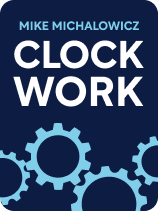

This article is an excerpt from the Shortform book guide to "Clockwork" by Mike Michalowicz. Shortform has the world's best summaries and analyses of books you should be reading.
Like this article? Sign up for a free trial here.
What are the benefits of hands-off management? Is the hands-off approach right for your business?
Adopting a hands-off approach to running your business enables you to reorient your focus from getting mired in the daily work towards improving your company’s framework. However, there are many things to consider before you relinquish your management responsibilities and hand them over to your team.
Mike Michalowicz shares three steps for switching to a hands-off management style.
Step 1: Inform Your Team About Your Plan
First, Michalowicz claims you should expect your colleagues will need support understanding the reason and purpose of your transition. Your team may be unfamiliar with a hands-off management style. Use proactive, open communication to ease their transition. One way to accomplish this is to describe how your hands-off approach benefits them: It empowers them to attain valuable, hands-on job experience and enjoy autonomy in their roles.
(Shortform note: Your employees may worry that in your new hands-off role you’ll be less involved in their professional growth in the name of empowering them with extra autonomy. The authors of First, Break All the Rules recommend you stay involved in your employees’ growth by scheduling semi-annual meetings with each of them. During these meetings, ask your employees to reflect on their past progress and set goals for their future progress. These meetings also provide you with an opportunity to give your employees feedback that will further improve their skills and empower them.)
A second way to help your employees understand your new hands-off role is to schedule a weekly check-in. During this check-in, do the following: 1) Proactively communicate any upcoming steps of your transition; 2) shout out employees who contribute positively to the transition; and 3) welcome questions or concerns your teammates have about your transition.
Step 2: Develop an Efficient Training Process
Michalowicz’s next step in releasing hands-on responsibility for your business is to establish an efficient system for training employees to handle daily operations. Typically, entrepreneurs train employees by writing a manual and assigning employees to read it. The author claims that writing a manual is overly time-consuming.
(Shortform note: Although creating a written manual is a time-consuming effort, it may still be worth the effort: Research suggests that people comprehend and remember more when they read information versus when they acquire it through audio or videos. There are two main reasons for this. First, when you physically hold and flip through written content, your brain connects what you read with where it was on the page. This connection increases your retention of information. Second, people associate audio and video engagement with social media, so they tend to consume it in the same way they consume social media: quickly and with only surface-level engagement.)
To design a more efficient training system, the author recommends you save time by recording tasks while they happen in real-time. For computer-based tasks, use screen-recording software and voice narration to explain the steps of the task as you or an employee completes it. For other tasks, make a video of yourself or an employee completing it, and narrate its steps.
(Shortform note: How can you ensure your training videos are effective and engaging? First, at the beginning of each video, share exactly what the trainee will be learning. This step helps you clarify the topic of your video, making it more likely you’ll skip sharing unnecessary information. Second, focus your trainees’ attention and help them organize their knowledge by breaking long training videos into short, three-to-five-minute mini-videos. Each mini-video should have its own subtopic and goal.)
Step 3: Gradually Increase Your Team’s Independence
Training your employees to handle daily operations significantly reduces your hands-on work. To further trim down your hands-on work, train your employees to also be responsible for decisions associated with daily tasks. According to Michalowicz, the best process for this step is a gradual one: Over time, increase your teammates’ ownership over task-related decisions until they’re responsible for all task-related decisions. A gradual process ensures your employees have ample time to adjust to their new responsibilities.
Follow these steps to gradually release responsibility to your team:
1) Have employees interview you. After your employees learn how to complete their assigned tasks via your training videos, they’ll likely still have questions. When they do, schedule a meeting and have them interview you to learn more about their role. This way, they ask the questions they most need the answers to.
2) Delegate decisions to employees. After an employee is independently completing their assigned task(s), assign them the decisions associated with that task. For example, assign the person who interviews senior citizens to decide what interview questions to ask. To empower each employee to be independent with decision-making, resist the urge to give input on their decisions.
3) Reflect with employees on their decisions. After an employee makes a decision, provide them with an opportunity to learn from any mistakes by reflecting with them on their decision’s outcomes.

———End of Preview———
Like what you just read? Read the rest of the world's best book summary and analysis of Mike Michalowicz's "Clockwork" at Shortform.
Here's what you'll find in our full Clockwork summary:
- How you can take a four-week vacation as a small business owner
- How to avoid burnout as an entrepreneur
- Why a hands-on approach to leadership is usually not the best method






